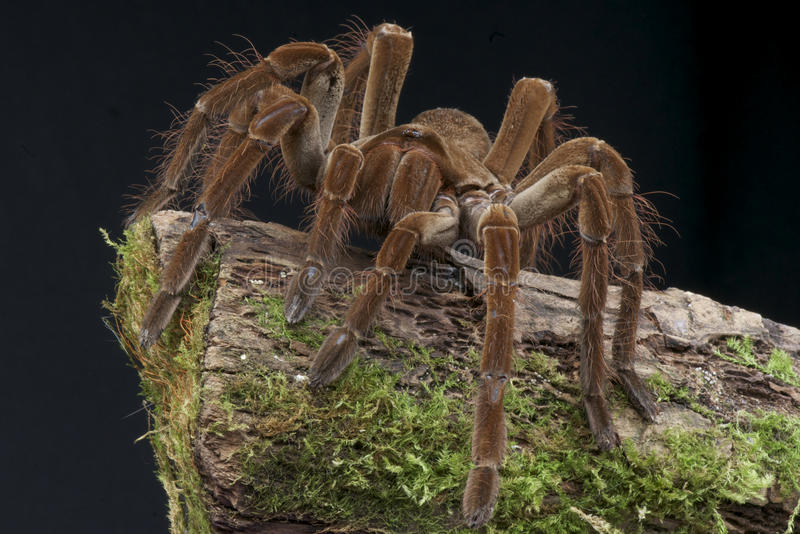ANIMAL: Goliath Birdeater Tarantula/Spider Theraphosa blondi Type of Animal: Tarantula Habitat: Rainforest, marshy/swampy areas in rainforest, deep silk-lined burrows & under rocks/roots Location(s): Northern South America Appearance: Can be russet brown, black, tan, & light brown, females larger than males, largest tarantula & heaviest spider in world, hairy body, 4 pairs of legs-8 legs total, stocky body Food/Diet: Insects, worms, smaller arachnids, birds, amphibians, lizards, rodents, snakes, bats. Females sometimes prey on smaller males. Status in Wild: Stable Conservation: Breeding in zoos, pet trade, & breeders. Lifestyle: Solitary Additional Info: Called: Male Female Young: Spiderling Group: Solitary Weight: Male: 5 oz Female: 6 oz Gestation: 1.5-2 months Life Span: Males: 2.5-6 years Females: 12-25 years Body Length: Male: 4.5 in Female: 5 in Main predators are other tarantulas (females prey on smaller males), spider wasps, carnivorous/omnivorous mammals, snakes, birds, & lizards. They’re active at night (nocturnal). Females can be 11-12 in in diameter, males being around 9.5-10 in. Females can lay 50-200 eggs per year. Egg sacs about size of tennis ball. Males die within few months after mating, explaining much shorter lifespan for males. Because males die after mating, competition can be fierce & even deadly. After maturation molt, males develop “finger” on underside of 1st set of front legs used to hook/lock female’s fangs & steady themselves while mating. Spiderlings molt 5-6 times in 1st year of life. Like all tarantulas, they have poor eyesight (even though they have 8 eyes) & hunt by sensing ground vibrations. Fun Fact(s): Can regenerate lost limbs when molting. Some S American cultures eat tarantulas after roasting them, saying it has shrimp-like flavor. Children in Venezuela’s Piaroa tribe learn to hunt them at early age. Sometimes kept as pets. Like all tarantulas, capable of delivering venomous bite, which is painful but not lethal. Dry bites (those w/o venom) not uncommon. Fangs themselves more likely to do damage since they can break human skin. Venom more often used for killing prey. Prefer to rub abdomen w/ hind legs & release highly irritating urticating hairs. Other mechanisms are to rub hairs together creating hissing noise that can be heard up to 15 ft away & rear up on hind legs to show inch-long fangs. These tarantulas typically only injure people in self-defense. Since they don’t have teeth to tear/chew food, they regurgitate digestive juices into prey, breaking down soft tissue making it possible for spider to suck up liquid & eat meal.

